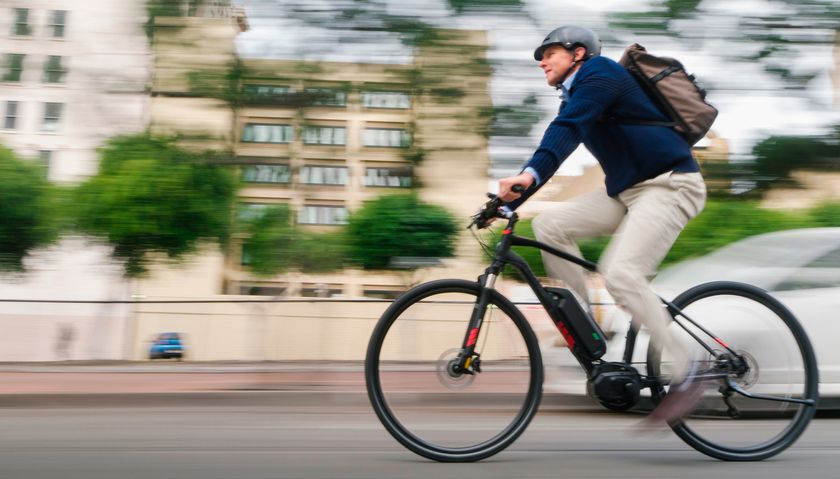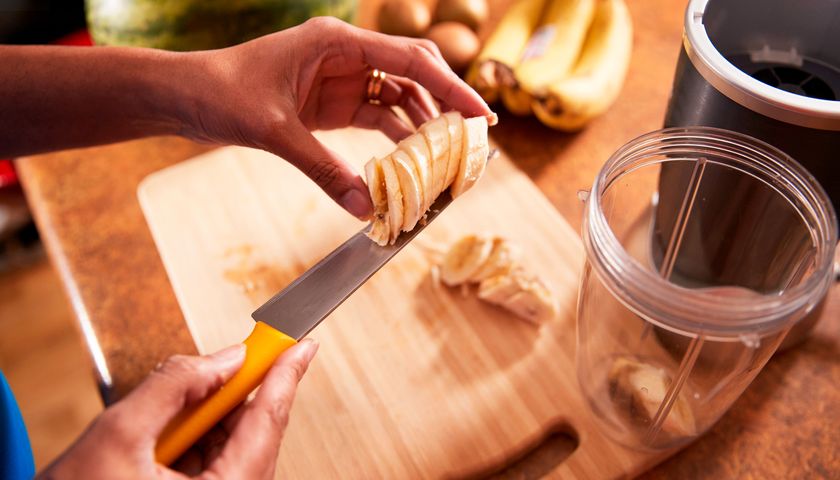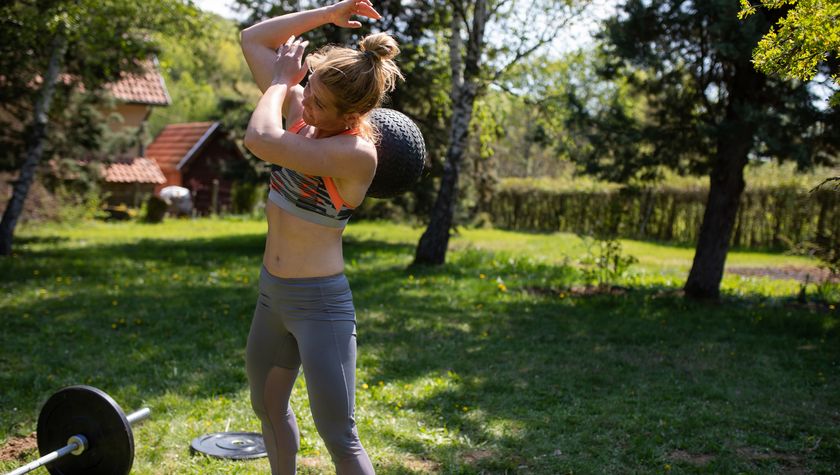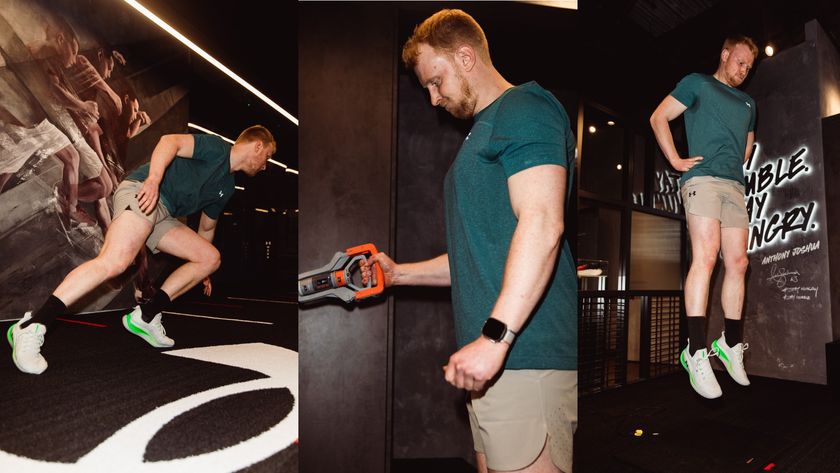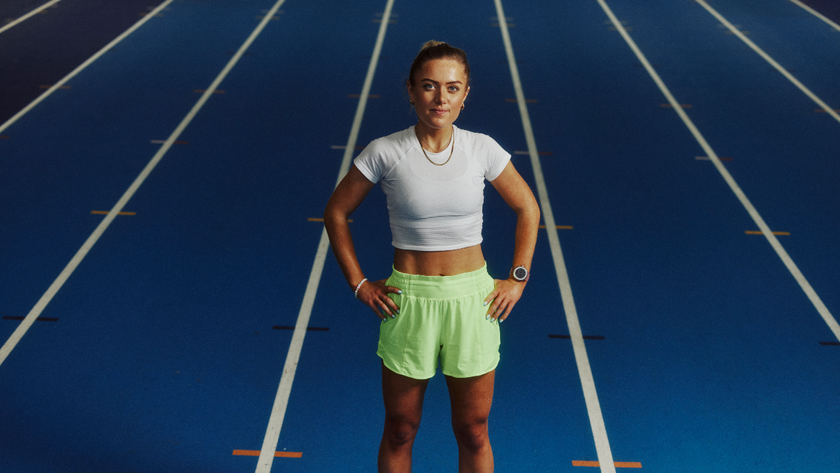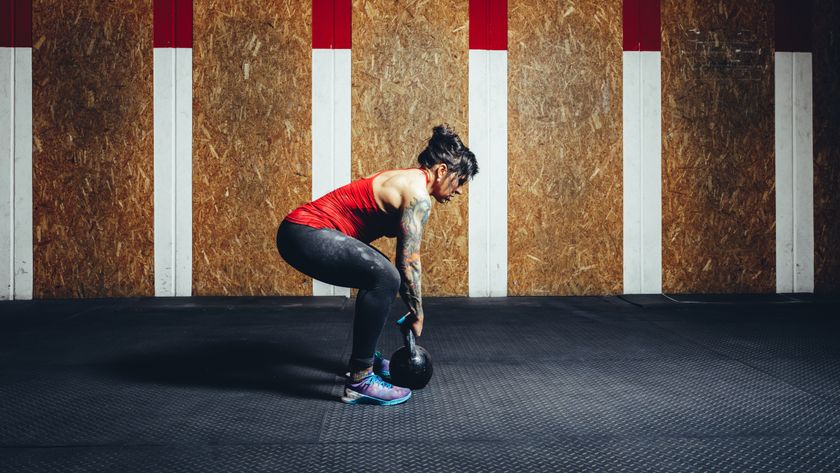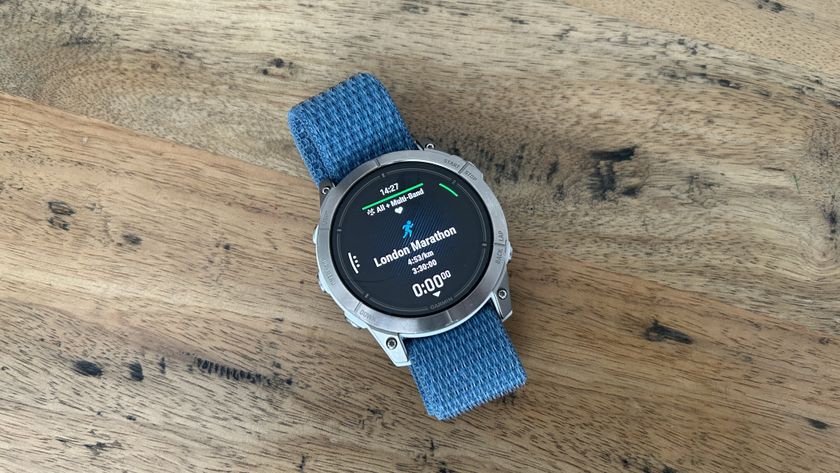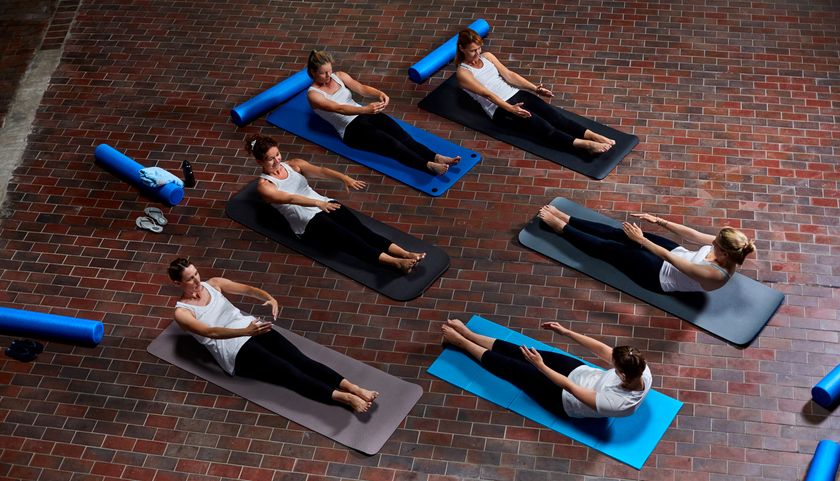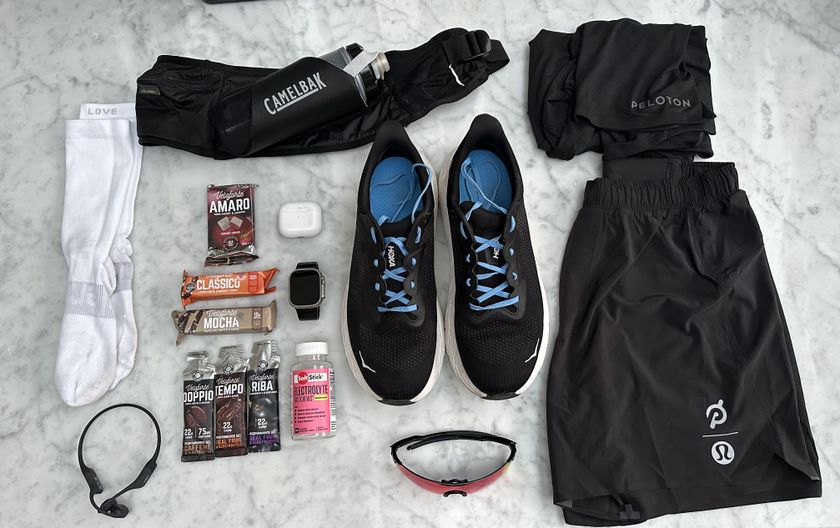Martin Rooney's top martial arts
Combat sports veteran Rooney breaks down five of the best martial arts.
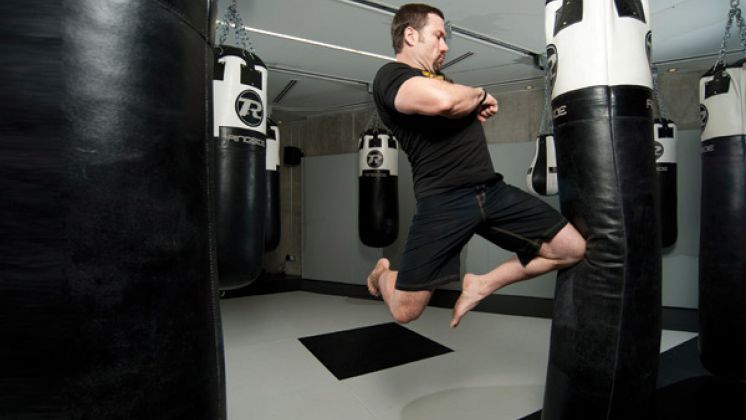
Martin Rooney spent three years travelling the globe and training in all the different fight styles he could find so he can fight anyone, anywhere. Here, he gives us the scoop on who's the toughest.
Muay Thai
Sometimes known as, 'the art of eight limbs', Muay Thai lets you hit opponents with virtually anything. Punches, kicks and elbows are all fine, as is clinching with an opponent to knee him in the face.
Training
'In Thailand you have rice for breakfast, train, eat rice and train some more', says Rooney. 'We were in 38°C heat and we'd train two or three sessions with our own personal trainer every day, sometimes with a ten-mile [16km] run in the morning. We'd do bag work, jump rope and a lot of bodyweight work. The people are happy and smiling, but they're super-tough‚ they love to sneak a kick into your ribs just as you're breathing out, and they love to see you babying a knot on your shin that'd be nothing to them. But the training felt great, it's something I think everyone should do.'
Signature move: Roundhouse kick
A Thai roundhouse uses the leg like a baseball bat‚ you swing your whole body and connect with the shin. Rooney's training involved being on the receiving end. 'I had to learn to take the kicks. A trainer would throw 50 kicks at my body a day. Not full power, but enough so that you'd worry about your internal organs. Some guys would piss blood afterwards‚ but they're not doing it to be sadistic, they're doing it to prepare you.'
Exercise: One-leg hip thrust
The teep or push kick is a key Muay Thai weapon that helps develop hip power.
Try it: Go to fairtexpattaya.com to find a comfortable training experience in Bangkok for a price, although there are cheaper alternatives available.
Judo
Judo (Japanese for 'gentle way') removes the gouging and hitting of traditional jiu jitsu. The result is a martial art aesthetically pleasing enough to be an Olympic sport, but effective enough to break bones if you do it on the pavement outside a kebab shop.
Training
'In Japan, people aren't late. You are there to work hard, keep your mouth shut and show respect', says Rooney. 'A typical session at the Kodokan [Japan's most famous judo facility] would be a full warm-up, then an hour or more of technical drilling, then groundwork, known as newaza. The magic of the grappling arts is that you can go just as hard as you would in competition the whole time, so you'd watch spectacular throws for hours. If you do an hour of uchi komi - footwork and grips with no throws - that's incredible bodyweight work. And I was doing it eight hours a day.'
Signature move: Uchi mata
It's one of the first throws you learn but uchi mata ('inner thigh throw') is beloved of top-level fighters. You spin around, grab and lift your opponent's leg with your own to flip them over like a turtle.
Exercise: Uchi mata press-up
This mimics the movement of an uchi mata. As you lower your chest to the ground you raise one foot up behind you as high as you can. It works your glutes, your hamstrings and your lower back.
Get the Coach Newsletter
Sign up for workout ideas, training advice, reviews of the latest gear and more.
Try it: The Kodokan offers three-month or nine-month beginners courses which, in theory, should bag you a black belt. Apply at kodokan.org.
Wrestling
This isn't to be confused with the clotheslines-and-chairs version, the US has some of the best wrestlers in the world and Iowa, where Rooney trained, produces the toughest, most hard-working grapplers in the States. The basic idea is to throw your opponent and then pin his shoulders to the mat.
Training
'Wrestlers are slowly but surely taking over mixed martial arts', says Rooney. 'It's because they're raised to work hard. They spend years competing every weekend, drilling every move for hours and running up stairs to lose weight. To survive that they have to be incredibly durable, and once they get into MMA they can choose when to take the fight to the ground.'
Signature move: Sprawl
A sprawl involves kicking your legs backwards and out of reach of an opponent's arms. Ideally you also want to drop your hips on his head as he tries to tackle you.
Exercise: Partner squat
Learning to shift an opponent's bodyweight is key in wrestling, so if you can find a willing partner, use them for squats instead of a barbell.
Try it: The place most US wrestlers start is school but many MMA gyms, such as Xtreme Couture (xtremecouture.tv), offer wrestling-only classes. In the UK, try London Shootfighters (londonshootfighters.com).
Brazillian jiu-jitsu
Brothers Carlos and Hélio Gracie, the fathers of Brazilian jiu jitsu, learned traditional jiu jitsu from a visiting Japanese master in the early 20th century, then adapted it to work better for weaker fighters. You win by submission, but gain points for moving into positions where you'd be able to batter your opponent in a no-rules street fight.
Training
'The training in Brazil is mostly about sparring or 'rolling'', says Rooney. 'It's less intense than in Japan. The best part was training outside, Rolles Gracie [Carlos's grandson] and his team would train on a place called Devil's Beach, a gym on the beach, where all the weights are made of stone. Every 100 metres on the beach there are chin-up and dip bars, so we'd train on them. It was great, back to nature.'
Signature move: Guard
The Gracie's key innovation was an emphasis on wrapping their legs around their opponents when trapped underneath them. Not only does the guard hinder the top man's movement, it also makes him vulnerable to chokes and joint locks.
Exercise: Single-leg Romanian deadlift
Jiu jitsu relies on a lot of unilateral pushing power, so this move is perfect. Stand on one leg and lower the bar down the front of your leg until you feel a strong stretch in your hamstring, then straighten up.
Try it: You can organise a BJJ holiday in Brazil at nexussurf.com, but for a taste of the art you can train with Roger Gracie, currently the world's best grappler, in London. Visit rogergracie.com.
Sambo
Developed in the 1920s by the Soviet military as a fusion of martial arts such as karate and judo, Sambo, an acronym for the Russian for, 'self-defence without weapons'‚ is now one of Russia's national sports. It comes in three different varieties: sport, which is restricted to throws and locks; freestyle, which also allows neck cranks and chokes; and combat, which allows punches and kicks.
Training
'Russian culture is hard', says Rooney. 'They're prepared to freeze, they're prepared to starve, they've come through a long time of suffering. You see that on the mat. These guys aren't smiling, and if they get banged up they don't roll around screaming‚ it's really hard to read them. The facilities were old, so there was tons of bodyweight work, cartwheels and flips, and every Russian guy could do a full split. I worked with a couple of world champions and they said their physical education is all gymnastics. I'm pretty athletic, but I stuck out like a sore thumb.'
Signature move: Leg lock
Leg locks are illegal in judo and Brazilian jiu jitsu, so they’re one of the more feared weapons in the Sambo practitioner’s arsenal. There are two main kinds of lock: kneebars, where you try to hyperextend your opponent’s knee joint, and ankle locks, where you put pressure on their achilles tendon and ankle bones. The latter’s a lot more painful.
Exercise: Kettlebell split squat
'Kettlebells are probably more popular in the US than in Russia these days, but the training in Russia is more technical', says Rooney. This split squat will give you the explosive legs you need for fast throws. Holding one or two kettlebells, start in a split stance and bend your front knee to 90°'.
Try it: To have a go without a visa, check out Glasgow's dynamosambo.co.uk.
Kickboxing
Not to be confused with Muay Thai, Dutch kickboxing uses the rules developed for the Japanese organisation K-1, clinching and elbows are illegal, but knees are fine. 'The Dutch style is about knocking you out fast', explains Rooney. 'Every fight I saw in Holland ended in a knockout, but almost all Thai fights go to a decision. They're radically different in performance and technique.'
Training
'The training in Holland uses more modern techniques than in Thailand', says Rooney. 'But there's still a lot of basic stuff, sit-ups, press-ups and so on. If you have these advanced techniques but you're only doing them a couple of days a week, and some other guy's doing 10,000 press-ups a year, then he's going to get the results. I've definitely gone back to basics as a result.'
Signature move: Overhand right
Dutch-style kickboxing places more emphasis on punching than Thai. The overhand right is a classic knockout blow that's thrown almost like bowling a cricket ball, so it can slip over the top of an opponent's guard and smash into their temple.
Exercise: Rope grab sit-up
This is a classic abs conditioning exercise. As you do a sit-up, imagine you're grabbing a rope and then pulling it back towards you. It keeps your core engaged and stops you from using momentum.
Try it: Amsterdam's Mejiro gym offers regular beginner sessions. Check it out (in English) at mejirogym.nl.
For more fight stories, subscribe to Men's Fitness. We'll give you five issues for £5. You can also download copies of the magazine here.
From 2008 to 2018, Joel worked for Men's Fitness, which predated, and then shared a website with, Coach. Though he spent years running the hills of Bath, he’s since ditched his trainers for a succession of Converse high-tops, since they’re better suited to his love of pulling vans, lifting cars, and hefting logs in a succession of strongman competitions.


